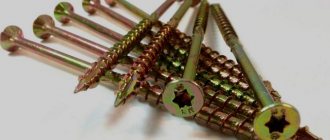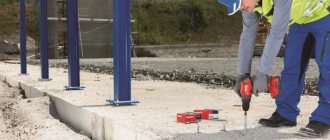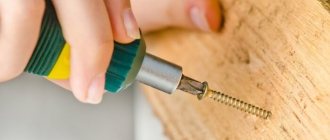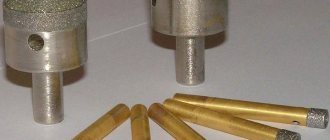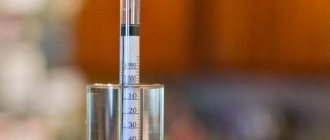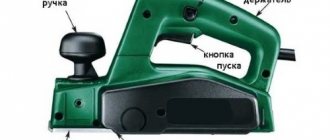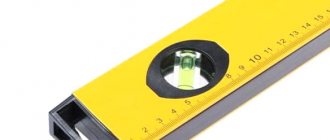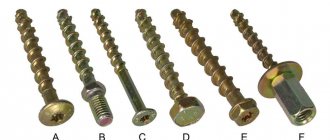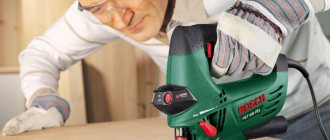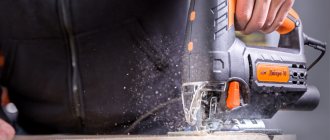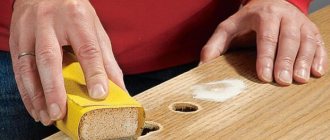Screw device
Concrete screws are made of high-strength steel, passivated with special compounds to protect against corrosion and mechanical damage when screwed in. Depending on the alloy used for passivation, self-tapping screws are available in yellow, grey, black and silver.
RECOMMENDED ON THE TOPIC
- Wood screws: dimensions, table
- Choosing the right paint for concrete
A screw consists of a head and a body - a metal rod with a thread. The lower part of the body of the self-tapping screw is narrowed in the form of a cone. There are notches applied to it that prevent the screws from unscrewing and falling out of the holes, and the concrete from cracking during installation.
The thread of the self-tapping screws also has notches that enhance its adhesion to concrete. The height of the thread along the body of the screw can vary. Hardware with uneven thread heights is widespread. They are suitable for working with cellular (porous) concrete (polystyrene concrete or wood concrete), brick (ceramic, silicate or Lego brick) and similar materials.
Self-tapping screws for concrete differ from conventional screws by having a more frequent thread pitch. It allows you to use dowels without drilling holes.
Turbo screws
Turbo screws belong to a class of screws designed for working in concrete. They have improved durability and are coated with a composition that prevents corrosion. The thread of the screw is intermittent and has small notches, which, when mounted in concrete, provide improved adhesion to the surface.
Turbo screws can come in different sizes and have different heads, but the diameter remains the same. The diameter of the turbo screw is 7mm. To install such a screw, you need to equip yourself with a standard screwdriver.
Varieties and sizes
Screws, self-tapping screws and anchors for concrete must comply with the interstate standard “Screws” - GOST 1147-80. They differ from each other in the following characteristics:
- material type;
- coating;
- head shape and slot type;
- thread design.
Self-tapping screws are made of carbon, corrosion-resistant steel or brass. By the color of the screw you can determine the technology that was used to apply the protective coating:
- yellow or silver color for galvanized hardware - they are galvanically coated with a layer of zinc, which protects them from corrosion;
- Oxidized screws that have been in contact with oxidizing agents are black;
- gray and dark gray color for screws that have been phosphated.
